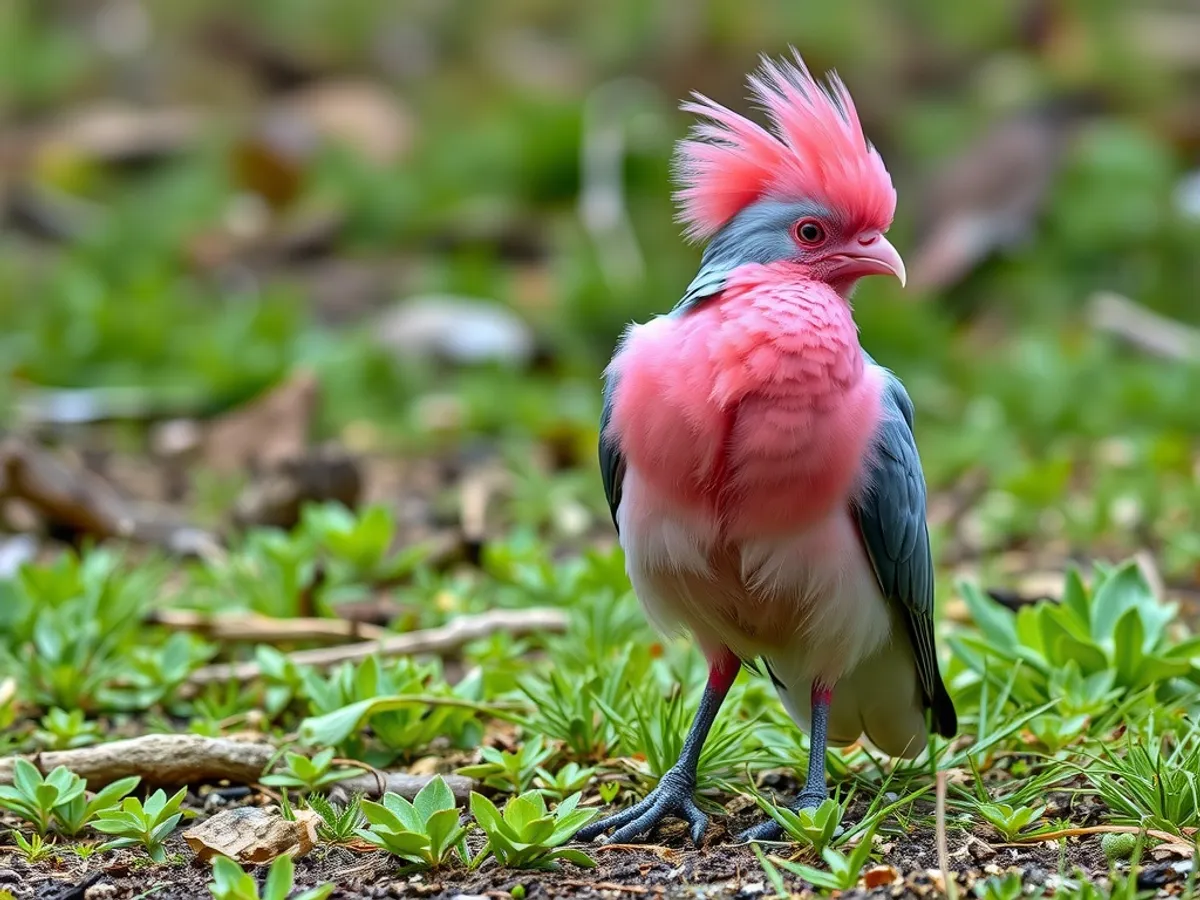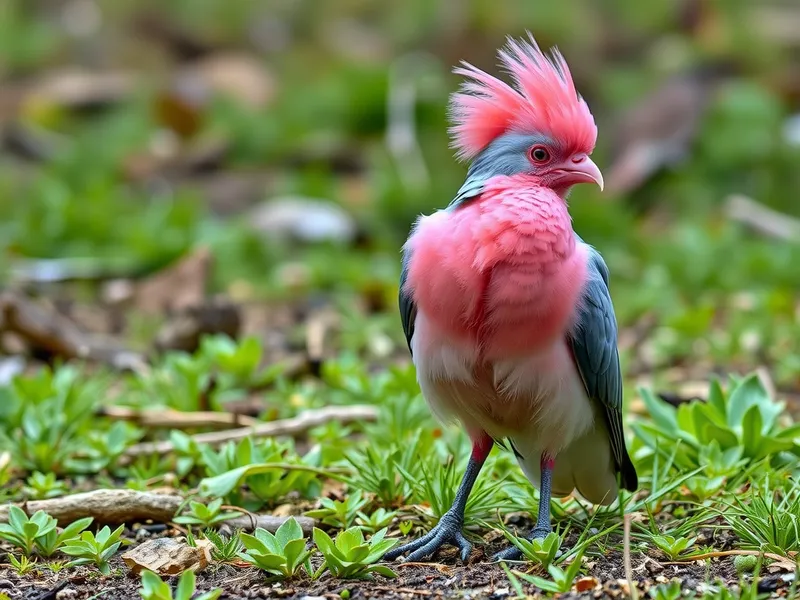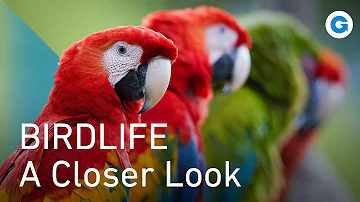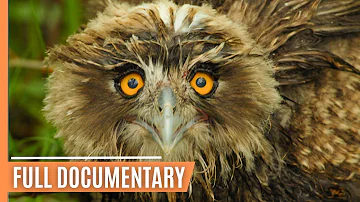
Galah
Eolophus roseicapilla

Meet the Galah
The Galah, also known as the rose-breasted cockatoo, is a medium-sized parrot native to Australia, easily recognized by its bright pink chest, pale pink face, and soft grey wings and back. These sociable and highly adaptable birds are often seen in large, noisy flocks across open country, woodlands, grasslands, and even urban parks. Galahs are known for their playful behavior, intelligence, and acrobatic flight, and they frequently engage in elaborate courtship displays. Their adaptability has allowed them to thrive in both rural and urban environments throughout mainland Australia.
Classification
Bird
Habitat
Open woodlands, grasslands, and urban areas
Diet
Herbivore
Lifespan
25-40 years
Conservation
Least Concern
Weight
270-350 g
📖Fascinating Facts
Distinctive Coloration
Galahs are easily identified by their vivid pink and grey plumage, which sets them apart from other Australian cockatoos.
Monogamous Pairs
They form lifelong monogamous pairs and often stay together throughout the year, sharing parenting duties equally.
Urban Adaptation
Galahs have successfully adapted to urban environments and are commonly seen in city parks and gardens across Australia.
📋Detailed Description
The Galah (Eolophus roseicapilla) is a medium-sized cockatoo, measuring 35–38 cm (14–15 in) in length and weighing between 270–350 g (9.5–12.3 oz). It is instantly recognizable by its striking plumage: a deep rose-pink breast and face, contrasting with a pale pink to white crown and crest, and soft grey wings, back, and tail. The bill is short, robust, and pale horn-colored, adapted for cracking seeds. Males typically have dark brown to black irises, while females have reddish-pink irises, aiding in sex identification. Galahs are highly social, forming large, cohesive flocks that can number in the hundreds, especially outside the breeding season. Their vocalizations are loud and varied, including screeches, whistles, and chattering, which help maintain group cohesion and warn of predators. Galahs are diurnal and spend much of their day foraging on the ground for seeds, roots, and bulbs, but will also feed in trees and shrubs. They are agile fliers, capable of rapid, acrobatic maneuvers, and often engage in playful aerial displays. Their adaptability to altered landscapes, including farmlands and urban areas, has contributed to their widespread distribution across mainland Australia. Galahs are cavity nesters, utilizing tree hollows for breeding, and exhibit strong pair bonds, often remaining monogamous for life.
💡 Did you know?
Despite their abundance and adaptability, Galahs can form hybrid offspring with other cockatoo species in the wild, such as the Major Mitchell's Cockatoo.
🔬Research & Sources
Wikipedia Summary
The galah, less commonly known as the pink and grey cockatoo or rose-breasted cockatoo, is an Australian species of cockatoo and the only member of the genus Eolophus. The galah is adapted to a wide variety of modified and unmodified habitats and is one of Australia's most abundant and widespread bird species. The species is endemic to mainland Australia. It was introduced to Tasmania, where it is now widespread, in the mid-19th century and much more recently to New Zealand.
Last Modified: 5/31/2025
🎭Behavior & Social Structure
Galahs exhibit complex social behaviors, living in flocks that provide safety from predators and facilitate efficient foraging. They are highly gregarious, engaging in mutual preening (allopreening) and synchronized group activities. Foraging is predominantly terrestrial, with birds walking or hopping on the ground to feed on seeds, grains, and occasionally insects. They have a strong preference for seeds of native grasses and agricultural crops, sometimes leading to conflicts with farmers. Galahs are known for their playfulness, frequently hanging upside down from branches, sliding down wires, and engaging in aerial chases. They maintain a daily routine of morning and late afternoon feeding, with midday periods spent resting and preening in shaded perches. Roosting occurs communally in large trees, often near water sources. Their loud, repetitive calls serve both to communicate within the flock and to establish territory.
👶Reproduction & Life Cycle
Galahs are monogamous, forming long-term pair bonds that may last for life. The breeding season varies geographically but generally occurs from July to December in southern Australia and after rainfall in arid regions. Pairs select and defend nest sites in tree hollows, often reusing the same site annually. The female lays 2–5 white eggs, which are incubated by both parents for about 24–25 days. Both parents share feeding duties, regurgitating partially digested food for the chicks. Fledging occurs at 49–56 days post-hatching, but juveniles may remain with the parents for several weeks before joining juvenile flocks. High nest site fidelity and cooperative parental care contribute to their reproductive success.
🛡️Adaptations & Survival
Galahs possess several adaptations for survival in variable Australian environments. Their strong, curved bills are specialized for husking seeds and digging up roots and bulbs. The zygodactyl foot arrangement (two toes forward, two back) provides dexterity for climbing and manipulating food. Their plumage coloration offers camouflage among eucalyptus bark and flowering shrubs, while their loud calls and flocking behavior reduce predation risk. Galahs have evolved a high tolerance for human-modified landscapes, readily exploiting agricultural fields and urban parks. Their ability to exploit artificial water sources and nest in a variety of tree species has facilitated their expansion into previously unoccupied habitats.
📚Research Sources
🎨Cultural Significance
The Galah holds a prominent place in Australian culture and vernacular. The term 'galah' is colloquially used to describe a foolish or clownish person, reflecting the bird's playful and noisy nature. Galahs appear in Aboriginal mythology and are featured in traditional stories as symbols of sociability and adaptability. Their striking appearance and engaging behavior have made them popular in aviculture, both in Australia and internationally. However, their abundance and tendency to congregate in large flocks have also led to their perception as agricultural pests in some rural communities.
🔬Recent Research & Discoveries
Recent research has focused on Galah population genetics, revealing low genetic differentiation across their wide range, likely due to high mobility and gene flow. Studies on their vocal communication have shown regional dialects and complex social learning. Ecological research has examined their role in seed dispersal and their impact on agricultural systems. Ongoing studies are investigating the effects of urbanization on their health and behavior, including exposure to pollutants and changes in diet. Galahs are also used as model species for studying the evolution of monogamy and cooperative breeding in parrots.
🎥Wildlife Videos

Birds: Melodies, Feathers, and Flight | Full Wildlife Documentary
Melodious calls, vibrant feathers and the power of flight … uplifting, inspiring qualities bestowed on the multitude of birdlife that ...
Get.factual

Galah Cockatoo | Animated | Wildlife Documentary | Informative #biography#wildbirds#seaanimals
Galah Cockatoo | Animated | Wildlife Documentary | Informative #biography#wildbirds#seaanimals ...
Animals World.official

A Journey Through the Magical Wildlife of Chile | Full Documentary
An intimate and classic journey through this wild country. We witness magical moments of nature, from a cougar mother playing ...
Free High-Quality Documentaries

Wildlife's Rebirth - A True Natural Treasure | Free Documentary Nature
Wildlife's Rebirth in the Old Mine | Wildlife Documentary Watch 'Wild Canada - Nature's Untamed Beauty | Full Series' here: ...
Free Documentary - Nature

Secrets of the Outback | Wild Australia in 4K | Wildlife Nature Documentary
To many, Australia's Outback seems barren and inhospitable — a vast, sun-scorched wilderness with little life to offer. But look ...
Into the Wild Films

The Secret Lives of Birds and Their Aerial Feats | Full Documentary
We envy birds their mastery of the air, watching them enjoy the freedom of a 3 dimensional space. Flight allows them to get to hard ...
Free High-Quality Documentaries
🌍Habitat Information
The Galah typically inhabits Open woodlands, grasslands, and urban areas environments. Galahs have adapted to their environments with specialized features and behaviors.
Primary Habitat:
Open woodlands, grasslands, and urban areas
More detailed habitat information will be available soon.
🛡️Conservation Status
The Galah is currently classified as Least Concern. Conservation efforts are crucial for preserving this species for future generations.
Common Threats:
- 🏠Habitat loss and fragmentation
- 🌡️Climate change impacts
- 🎯Hunting and poaching
- 🏭Human-wildlife conflict
⚠️Threats & Conservation Challenges
Currently, Galahs face few significant natural threats due to their adaptability and large population size. Predation by raptors, such as the peregrine falcon and wedge-tailed eagle, is a natural mortality factor. In some regions, competition for nesting hollows with other parrots and introduced species (e.g., European starlings) poses a challenge. Human impacts include accidental poisoning from agricultural chemicals, vehicle collisions, and illegal trapping for the pet trade. In agricultural areas, Galahs are sometimes considered pests due to crop damage. Despite these pressures, population trends remain stable or increasing, and the species is classified as Least Concern by the IUCN.
🔬Scientific Classification
Scientific Name
Eolophus roseicapilla
Classification Hierarchy
🔍 About Taxonomic Classification
Taxonomic classification is a hierarchical system used by scientists to classify and organize living organisms based on shared characteristics and evolutionary relationships.
The system moves from broad categories (Kingdom) to increasingly specific ones, with each animal's scientific name typically consisting of its Genus and species.
📝Community Notes
Share your observations and insights about the Galah with our community of wildlife enthusiasts.
Join Our Community
Sign in to share your observations and connect with fellow wildlife enthusiasts.
Sign In to ContributeNo community notes yet
Be the first to share your observations about the Galah!
Explore Galah
Select a tab above to learn more about this amazing animal.
📸Photo Gallery
No photos available for this animal yet.
🌟Discover More Wildlife
Continue your journey of discovery with more fascinating animals from our database
